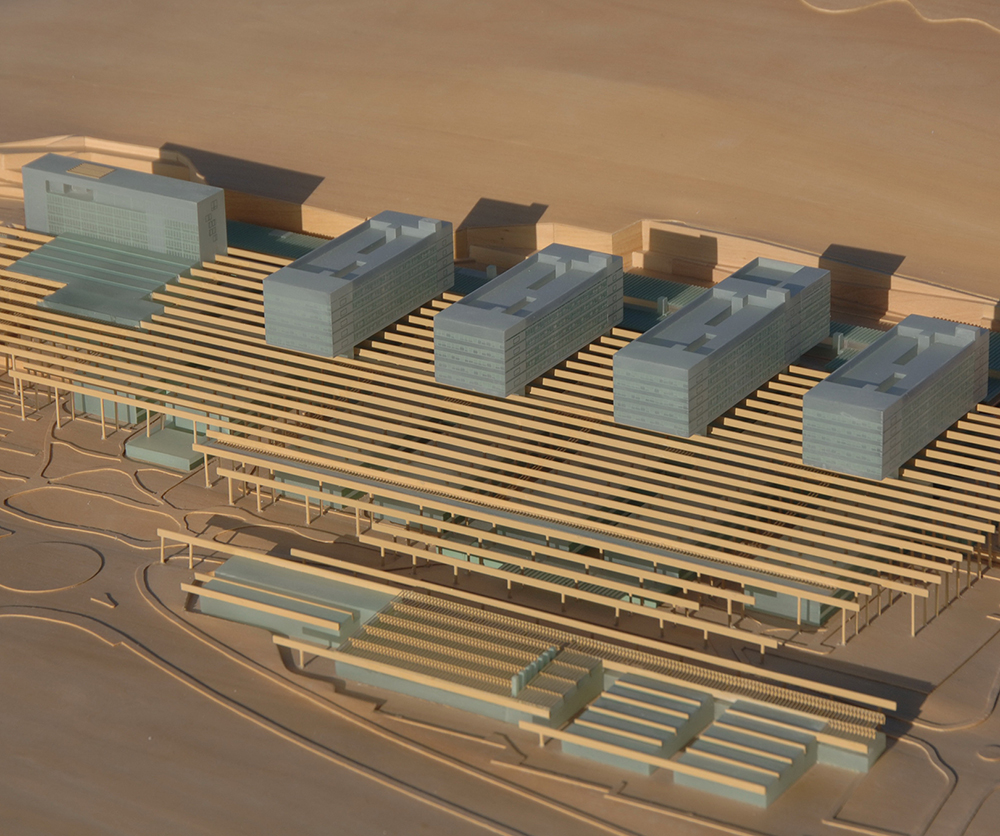
05_VARIABILITY, FLEXIBILITY & CHANGING INTENTIONS
The functional programme and relations between the different hospital areas and services are usually modified during the project and construction process. Due to this it’s necessary to introduce modulations creating defined spaces or “functional containers” that are easily interchangeable.
This Architecture flexibility is possible because of:
- The Systematization of the blocks dimensions.
- A unified structure.
- The blocks adaptability.
The containers should be industrialized in order to allow a quick on site assembly process. A hospital that is planned and designed today must respond and solve the requirements and needs of the next 15 years.
New requirements give place to modification in the space conditions and their technical infrastructure. Each of the building’s elements has a different wear down depending on its function and use.
In a hospital there are working areas which are clearly defined by their activity. The changes these spaces suffer are not uniform. Conceptually we can define three systems of decisions that affect spaces architecture and the service engineering:
- Primary System: Permanent.
It involves long-term actions and investments. The majority of their elements are fixed and will not be modified during the building’s life cycle. In this system we find urban planning, structure, services, stairs, lifts... This system must have a great capacity and flexibility in order to allow changes in the other two systems.
- Secondary System: Adaptable.
This system is characterized by its adaptability on the change of use. It’s a mid-term action (5-15years). The Elements that must have this capability are the coverings, ceilings, the electromechanical equipment, pipes, interior distributions. This system must be totally flexible.
- Tertiary System:
It can be completely modified. It’s a short-term inversion (0-5years). The elements are: Furniture, non-fixed equipment, certain services and there connections.
These issues must be taken into account in the design process and especially in the construction phase. One must have in mind that some of these are long term decisions.
The use of complicated constructive systems or systems that aren’t going to be amortized has no sense.
Back to About us